1. Lego

a. EOA wallet
Executing an action on the blockchain can be likened to constructing a Lego structure. Let's illustrate this with the example of swapping USDC for ETH using Uniswap. Initially, you must identify the correct 'port' or function on the Uniswap 'Lego block.' This could be a 'swap,' 'createPool,' or 'mint' function. Simultaneously, you have another Lego block, your EOA (Externally Owned Account) wallet, which holds your USDC tokens.
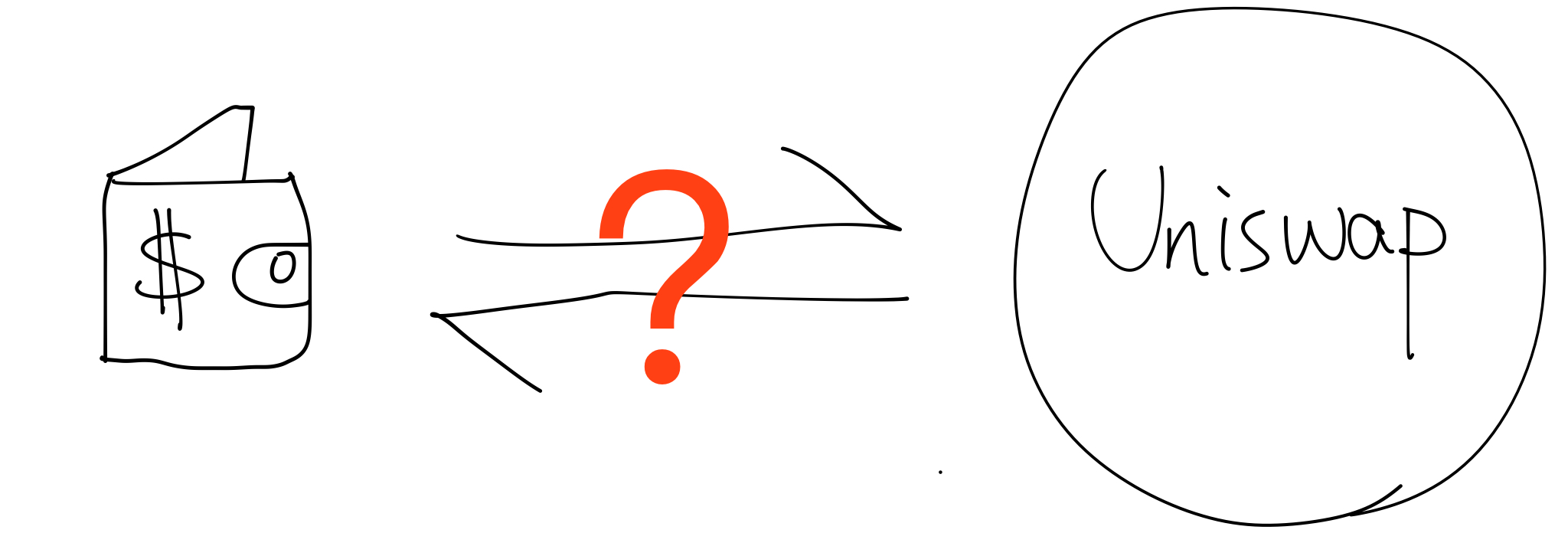
Here's the catch: these two Lego blocks—your wallet and the targeted Uniswap function—don't have compatible ports. They can't snap together directly. To bridge this gap, you'll need a transaction, which acts as an adapter, linking the dApp (in this case, Uniswap) with your wallet's assets.
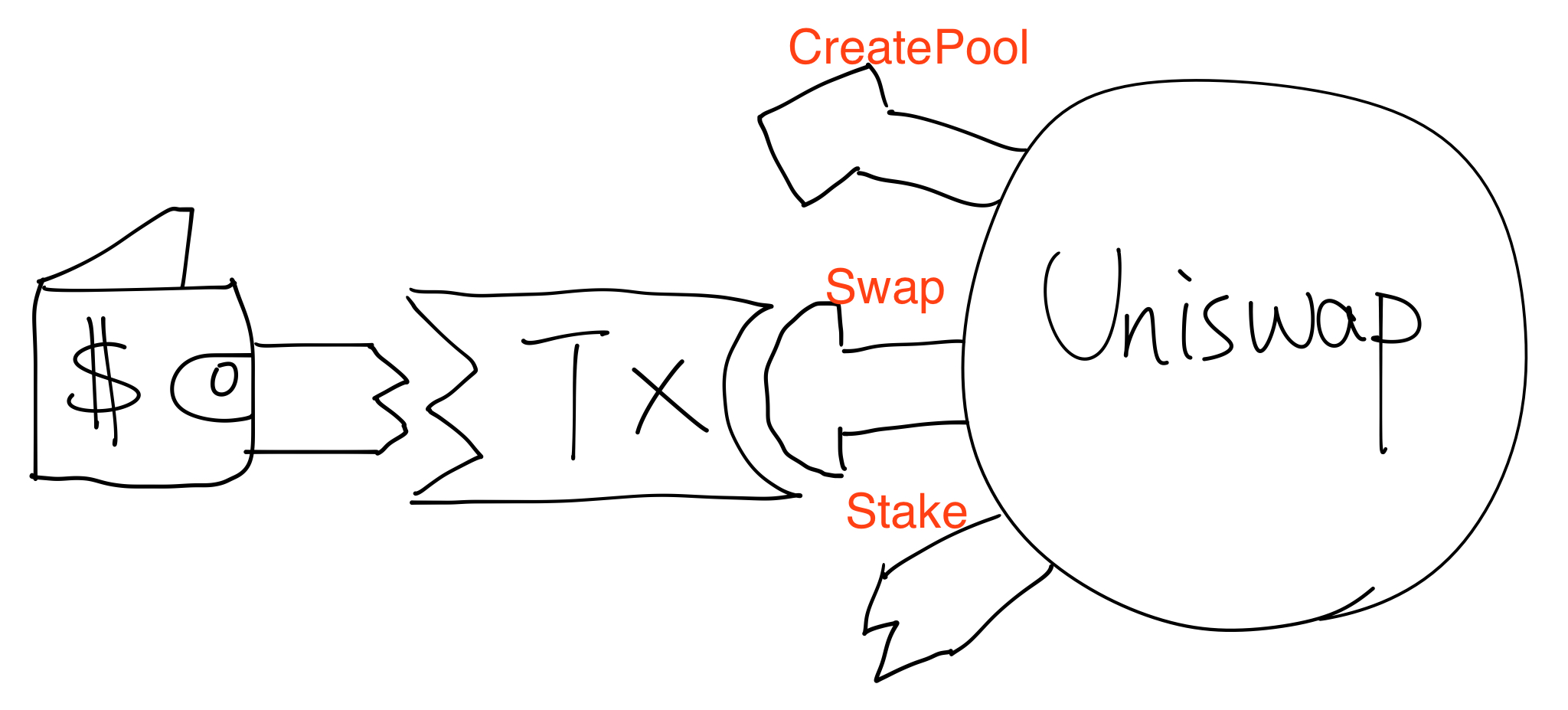
The final piece of the puzzle lies in securely connecting this transaction adapter to your wallet. Your wallet has a unique port designed to safeguard its assets. The keystone in this setup is the keypair held by you, the owner. This signature signed by the private key of keypair serves as the secure joint that connects your assets to the dApp, making the transaction valid and secure.
In an ideal 'Lego blockchain' world, one could freely replace any component with another. But that's not the case in reality. The only truly interchangeable component is the dApp module. You're free to choose which dApp to interact with—be it swapping tokens via Uniswap or purchasing an NFT on OpenSea. When it comes to wallets and keys, however, the only operable logic is signature verification, which corresponds to the ECDSA keypair.
b. Smart account wallet with account abstraction
Account abstraction is revolutionizing the blockchain landscape by making it more flexible, adaptive, and efficient. By breaking away from the limitations of traditional Externally Owned Accounts (EOA), it offers diversified authentication methods, injects programmable logic into wallets, and streamlines complex transactions. Let's delve into these three transformative benefits.

The first hallmark of account abstraction is its significant departure from the rigid structures of traditional EOA wallets. Instead of being limited to standard private key-based authentication, the system now offers an array of verification methods. These range from the familiar private keys to device-based passkeys and beyond.
The second groundbreaking feature of account abstraction is the ability for wallets to harbor their own logic, similar to dApps. This opens up fascinating possibilities for user-driven asset management. For instance, you could program your wallet to incorporate specific conditions that must be met before validating a transaction. Imagine setting time-based restrictions that only allow high-value transactions during a certain period, or establishing spending limits when interacting with specific dApps.
Just as transactions were the adapter under EOA scheme, 'user operations' serve as the bridge in the world of account abstraction, facilitating intricate and batch transactions far more efficiently. This allows for much smoother and multifaceted interactions between different blockchain components, such as wallets, dApps, and other smart contracts.
c. Lego Builder
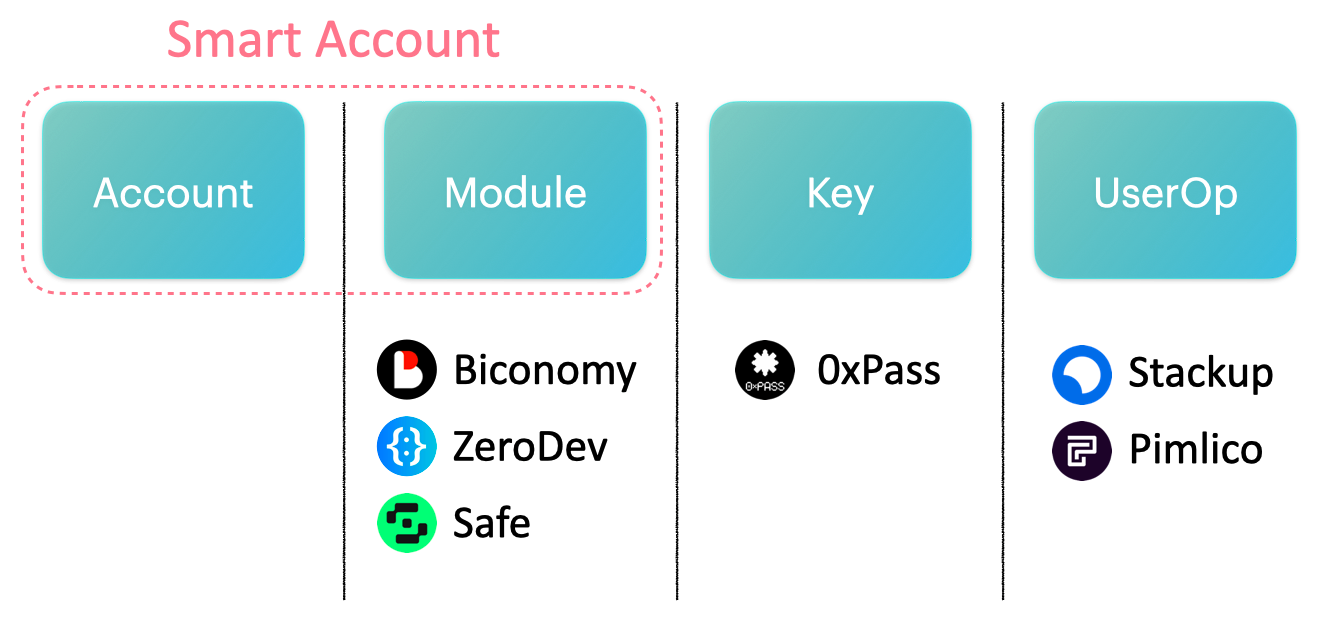
The field of account abstraction is bustling with builders. In the realm of smart accounts, companies like ZeroDev, Biconomy, Safe, and Alchemy are laying the foundational blocks for modular smart accounts, especially with protocols like ERC-6900. When it comes to key management, 0xPass has developed the Passport protocol, while Clave simplifies key storage with secure enclaves, thus eliminating the need for seed phrases. Furthermore, Stackup and Pimlico are pioneering the 'bundler,' helping users craft and send user operations, as well as introducing paymasters to sponsor gas fees for users.
As we reflect on the transformative power of account abstraction—from its diversified authentication options to its advanced wallet logic and streamlined 'user operations'—it's crucial to acknowledge the builders who are turning these innovative concepts into reality. These are the "Lego Builders" of the account abstraction ecosystem. They're the architects behind the modular smart accounts, advanced key management solutions, and efficient infra that make all these benefits possible.
Building Blocks of Smart Accounts
In the realm of smart accounts, organizations like ZeroDev, Biconomy, Safe, fun are serving as foundational architects. They're bringing to life the modular smart account frameworks. Alchemy, rhinestone and the preceding builders are leading the discussion of modular smart account standards like ERC-6900, which enables the kind of customization and flexibility discussed earlier.
Key Management Revolutionized
When it comes to managing cryptographic keys, there's also a surge of innovation. 0xPass is advancing the field with their Passport protocol, providing users with more dynamic and secure ways to manage their identity. Clave is making strides by securely storing keys in secure enclaves, which can render the traditional seed phrases obsolete, thus making key management more user-friendly.
Infra
Stackup and Pimlico are filling an important niche by focusing on bundlers and paymasters. They facilitate the crafting and sending of user operations, thereby acting as the grease that keeps the wheels of account abstraction turning smoothly. Paymasters, in particular, are introducing an innovative model to sponsor gas fees, making it easier for users to interact with the blockchain without worrying about the associated costs.
2. User experience transformed from user’s perspective
Building on the contributions of these Lego Builders, let's pivot to explore how these technological advances in account abstraction might shape the user experience. While the landscape is becoming increasingly flexible and user-centric, it's worth noting that these benefits come with their own sets of challenges.
Before the advent of account abstraction, entering the world of dApps required generating and securely storing a keypair—a cumbersome process that served as a significant barrier to entry for new users. The model was restrictive and offered no room for customization based on the user’s specific needs or the particular requirements of individual dApps.
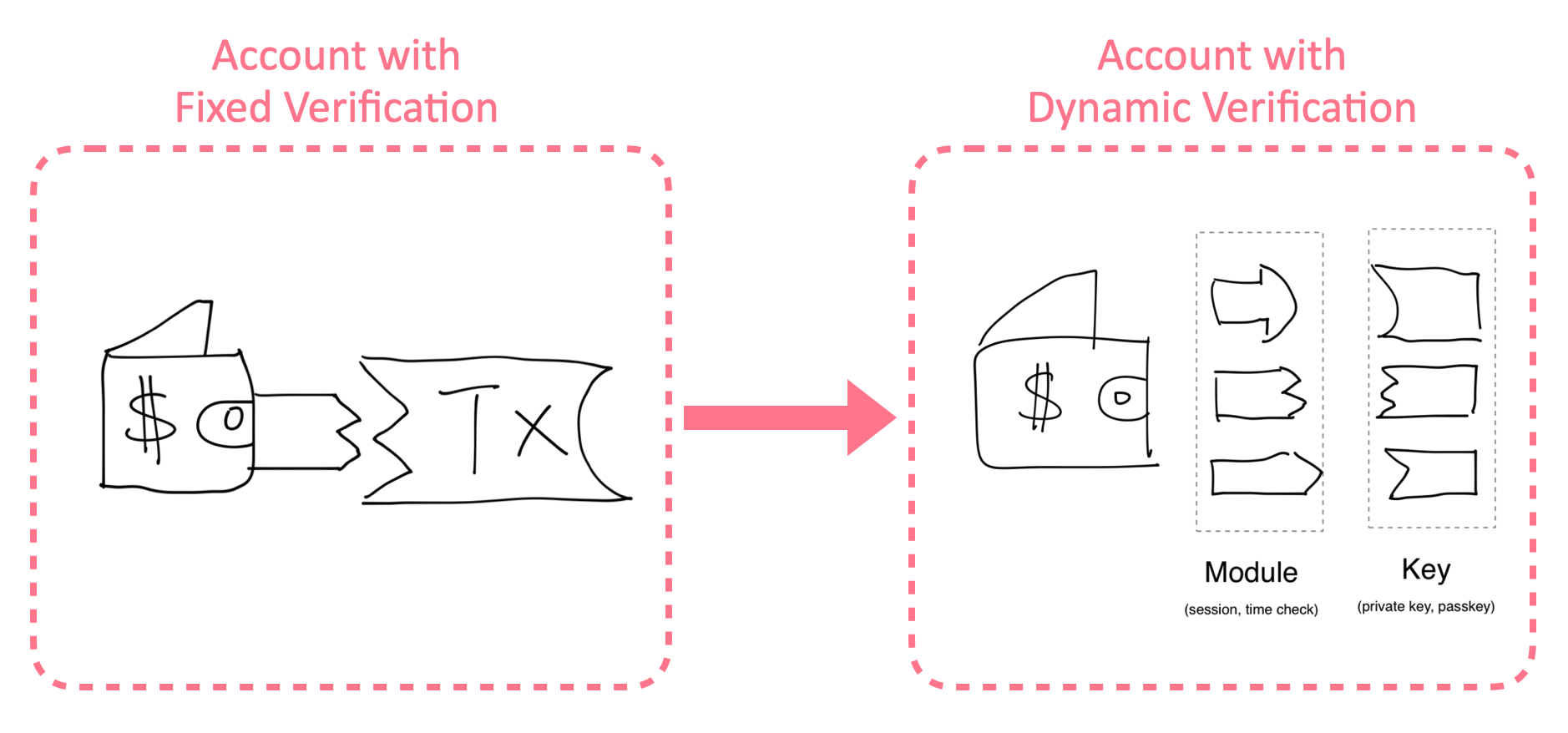
Account abstraction changes the game by decoupling key modules from account modules. This separation enables the adoption of more intuitive proof systems, like biometric data, touch ID, face ID, or even social logins. With this new approach, dApps can welcome users without the intimidating requirement of keypair generation and memorization. Moreover, dynamic key and account modules empower users to tailor their interaction with dApps, like creating session keys for seamless in-game experiences or setting up multi-factor authentication for high-value NFT transfers.
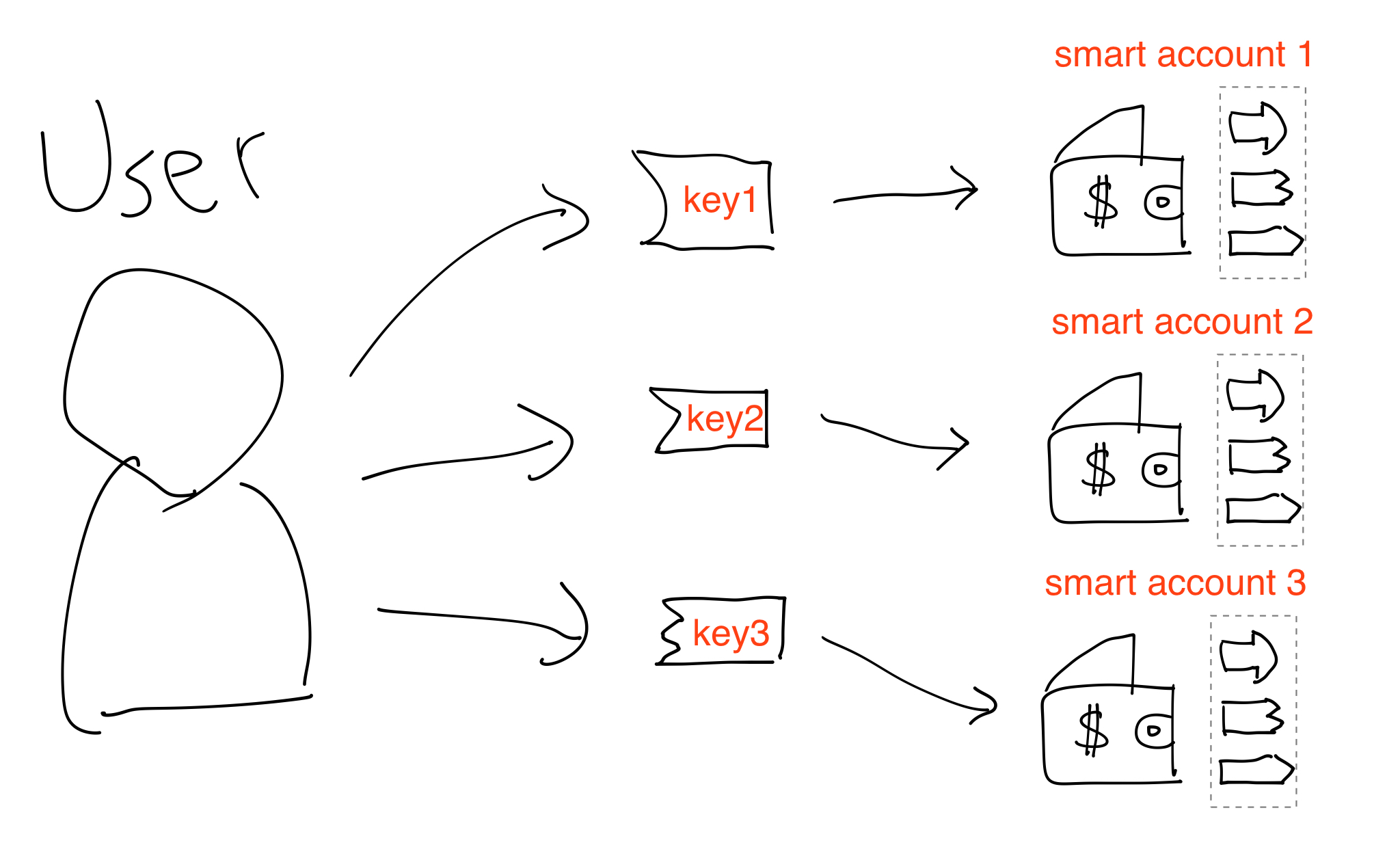
With account abstraction, it’s likely that users will own multiple smart accounts with varying smart accounts plugin and key modules for different dApps. You might have a basic ECDSA key pair for your primary assets, secured in one smart account with multi-signature and another with multi-factor authentication. Alongside these, you could have additional smart accounts managed through easier-to-use passkey modules for daily spending or gaming.
However, this newfound flexibility isn't without its challenges. As users accumulate more smart accounts—each featuring unique implementations and plugins from a variety of builders like ZeroDev, Biconomy, and Safe-the management of these accounts becomes an increasingly complex affair.
Your key your crypto
In traditional EOA wallets, choosing a wallet client was as simple as importing your private key. In contrast, smart wallet schemes present a far more intricate landscape. For example, consider you have a ZeroDev-enabled smart account for gaming, powered by your basic ECDSA private key and equipped with a session module. You might accrue in-game items that you'd like to sell for USDC. However, selling these assets becomes challenging not just because the game lacks an exchange, but also because each smart account comes with its own set of rules, making asset management far more complex than what we were accustomed to with EOAs.
Thus, while account abstraction enriches the blockchain experience with a layer of customization and user-friendliness, it also introduces an intricate web of modules that users must navigate.
In light of these complexities, ongoing discussions around standardizing smart accounts—especially through proposal like ERC-6900—are promising. This standardization aims to streamline the validation, execution, and integration of smart account plugins, thereby potentially simplifying their management. Yet, despite these advancements, navigating through a myriad of smart accounts and their associated plugins remains a considerable challenge for users. This points to an ongoing tension between customization and simplicity, a dynamic that will likely continue to evolve as the technology matures.
3. MoonChute: “Your key your smart account”
To mitigate the complexity that comes with account abstraction, MoonChute offers a unified smart account manager that embodies the principle of "your key, your smart account." MoonChute makes it easy for you to manage all smart accounts associated with your key in one place. Whether your smart accounts are created on different chains like Base or Polygon, or through various platform like ZeroDev with an ECDSAValidator plugin or Biconomy, MoonChute aims to make management seamless.
To delve deeper into the world of smart accounts and how they can revolutionize your blockchain experience, you're encouraged to Explore MoonChute's Unified Smart Account Manager. And if you're a developer—whether for wallets or dApps—MoonChute is soon to release an API tailored to your needs. So, don't hesitate to Get in Touch on Twitter for the latest updates.
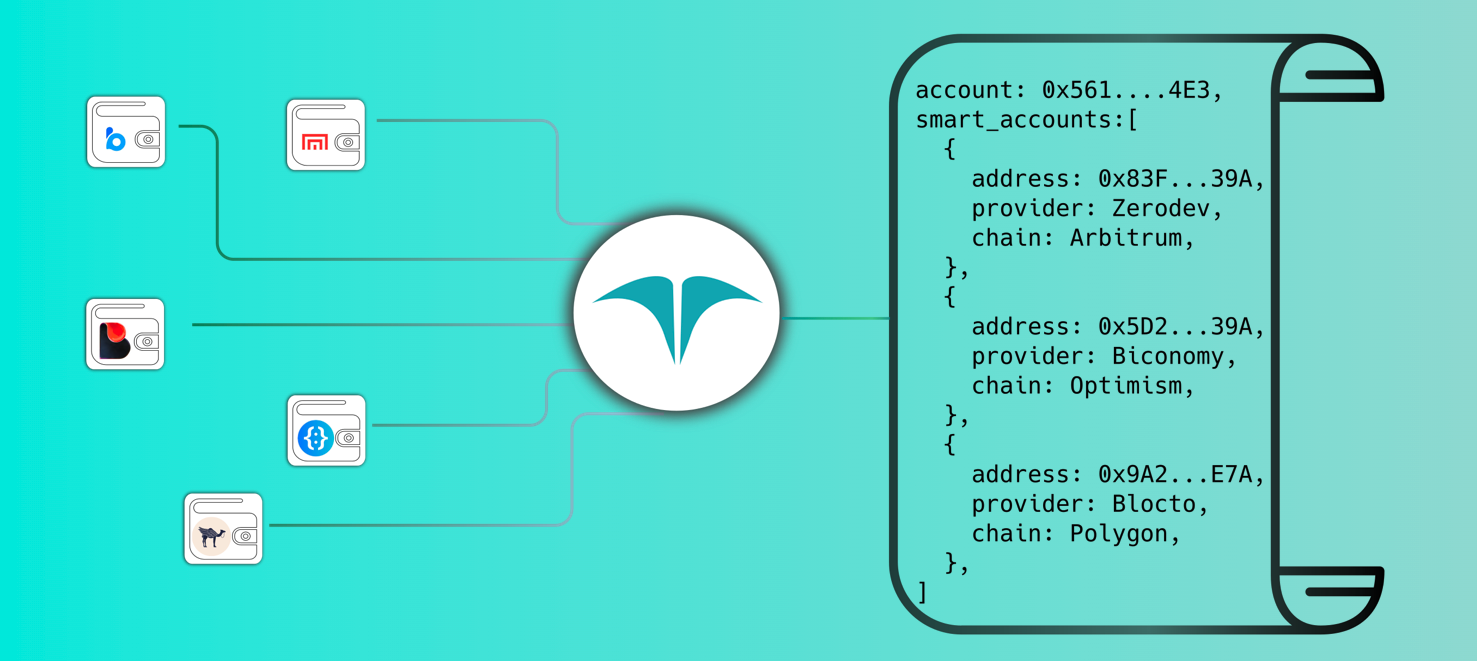
Conclusion
Account abstraction is like adding advanced, multi-functional Lego blocks that opens up unprecedented avenues for customization and user flexibility. While this new landscape is incredibly promising, it also introduces complexity that we must address through further development and standardization. Kudos to all the dedicated Lego builders—developers, innovators, and thought leaders—in the field of account abstraction; your work serves as the cornerstone of a new, more intricate.
If you want to dive deeper into the technical aspects of account abstraction, several thought leaders in the field offer rich insights:
